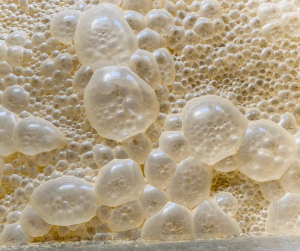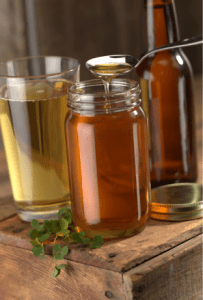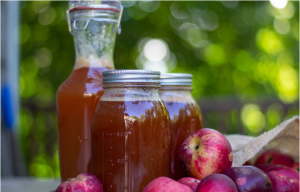Homebrew Yeast
Hello again, Homebrew Fans!
We talk a lot about water and grain and hops and honey and fruit and adjuncts and equipment, but wow, none of it means very much without the star of the homebrew alchemy show .. Yeast the Fermenter!
As I mentioned in our previous post, “Yeast is a Metabolic Marvel”, yeast is the transformative power that completes the beverages (and food) that we love. But it’s important to note that not all yeasts are created equal.
Like so many “levers” in homebrewing, different yeast groups and strains allow the homebrewer to highlight certain characteristics in the brew. From the crisp notes of a lager to the rich undertones of an ale, or the fruity accents in wines, the diversity of yeast strains dictates the character of our product.
Let’s dive into these major homebrew yeast groups and discover the unique strains that shape our favorite brews.
Ales (Saccharomyces cerevisiae)
Ale homebrew yeasts are top-fermenting, meaning they ferment at the top of the fermentation vessel. They thrive in warmer temperatures, typically between 60-72°F. Common strains include:
- American Ale like Wyeast 1056, Safale US-05, White Labs WLP001: Produces beers with a clean, crisp finish. Often referred to as the “Chico” strain, this is the strain that’s been popularized by Sierra Nevada’s Pale Ale
- British Ale like Wyeast 1098, Safale S-04, White Labs WLP002: Known for pronounced malt profiles. Sometimes called the “Fuller’s” strain because it’s believed to be sourced from Fuller’s Brewery in London
- Belgian Ale like Wyeast 1214, Safbrew T-58, White Labs WLP550: Imparts spicy, fruity, and complex flavors that are typical of Belgian styles. Sometimes referred to as the “Chimay” strain due to its likely origin from the Chimay Brewery in Belgium
Lagers (Saccharomyces pastorianus)
Lager homebrew yeasts are bottom-fermenting and prefer cooler temperatures, often between 44-55°F. In German, lager means “store” or “warehouse” .. that is, to put away for a
while. Common strains include:
- Pilsner Lager like Wyeast 2001, Saflager W-34/70, White Labs WLP800: Neutral with subtle fruity notes
- Bavarian Lager like Wyeast 2206, Saflager S-23, White Labs WLP820: Emphasizes rich maltiness
- Bohemian Lager like Wyeast 2124, White Labs WLP802: Versatile lager yeast with a malty finish
Wines (Saccharomyces cerevisiae var. ellipsoideus)
Wine homebrew yeasts play a significant role in defining the wine’s character, from flavor and aroma to mouthfeel. Common strains include:
- EC-1118: Suitable for many wine types
- D47: Enhances mouthfeel, ideal for white wines
- Montrachet: Offers a balanced profile for red and white wines
Meads (Saccharomyces cerevisiae)
Mead yeasts are chosen for their ability to ferment honey-rich environments, often producing meads with varying levels of sweetness. Common strains include:
- Wyeast 4184 (Sweet Mead): Best for sweet meads
- 71B-1122: Converts malic acid, enhancing flavor
- Wyeast 4632 (Dry Mead): Produces dry meads with a smooth finish
Sakes (Saccharomyces cerevisiae)
Sake yeast strains are essential in delivering the unique and complex profiles of sake, from floral and fruity to rich and umami. Common strains include:
- Kyokai No. 7 (Association No. 7): Popular for producing fragrant sakes
- Kyokai No. 9 (Association No. 9): Known for a richer profile
- Kyokai No. 6 (Association No. 6): Produces sake with sharpness and a refreshing acidity
Ciders (Saccharomyces cerevisiae)
Cider homebrew yeasts can ferment apple or pear sugars into a variety of flavor profiles ranging from crisp and fruity to complex and earthy. Common strains include:
- SafCider: Adaptable to various cider styles
- Wyeast 4766 (Cider): Produces soft and fruity ciders
So many choices…
Each yeast strain has evolved and been cultivated to offer unique attributes suitable for its specific beverage application. The “right” yeast not only ensures a successful fermentation but also contributes significantly to the flavor, aroma, and overall character of the finished product. Whether you’re brewing an IPA, crafting a Chardonnay, or fermenting a traditional sake, “Yeast the Fermenter” is the unsung hero that shapes your beverage’s personality. As a brewer or fermenter, understanding the characteristics and benefits of each yeast strain empowers you to create beverages that are truly exceptional.
Please check out our large selection of beer, wine, mead, cider, and sake yeast strains, and keep an eye on social media (Facebook/Instagram) our NTHBS Newsletter, and our Events page for all kinds of homebrew events.
In the meantime, please take one minute to respond below to the prompt “I [do/do not] make a starter when pitching my yeast, because _____________”.
Happy Trails, Homebrewers! I learned a lot as I wrote these two posts about yeast. I hope you found them informative.
Cheers!






